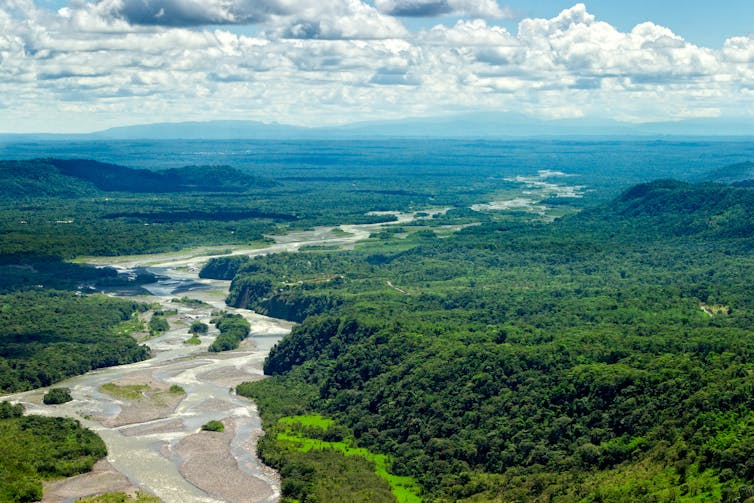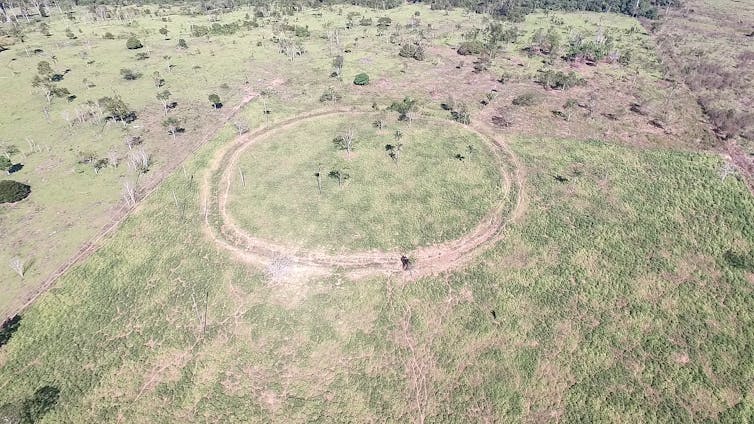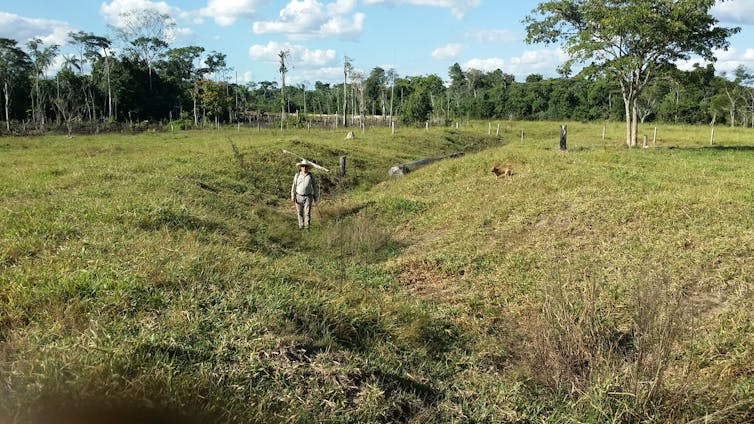
A number of ancient settlement sites were recently discovered in the Amazon’s Upper Tapajós Basin. This is no El Dorado – although you’d be forgiven for thinking so. The press coverage demonstrates a fixation on the idea that the tropical New World may once have been the site of monumental societies, such as those in Egypt or Mesopotamia. The recent discoveries were heralded by Newsweek as “rewriting” the history of the Americas before Columbus: not a modest claim. The Guardian proclaimed: “Lost Amazon villages uncovered by archaeologists.”
Meanwhile, the National Geographic (partly responsible for the funding of the project) announced that the “Amazon jungle was once home to millions more than previously thought”. This is far from the idea of a pristine landscape that conservationists have been alluding to for years. As one of the Exeter researchers noted to the Washington Post: “It seems that it was a mosaic of cultures.”

News from the Amazon has long been concerned with “lost tribes” or “uncontacted peoples”. One 1970 documentary portrays the key element of the genre: native peoples resisting assimilation. In this century, the emphasis has shifted somewhat. Increasingly, native Amazonian peoples are portrayed not only as “lost”, but also occupying a natural realm that is in danger of being lost itself to oil exploration, mining and timber extraction.
‘Lost’ Indians
This was strikingly illustrated in 2008, when José Carlos dos Reis Meirelles Junior, a FUNAI official (Brazil’s national Indian agency) published dramatic and still widely reproduced images of exotically-dyed Indians trying to bring down aircraft with bows and arrows. Meirelles described the threats to such tribes and their land as “a monumental crime against the natural world”.
Meirelles acknowledged that efforts to forestall destructive timber exploitation were more effective if borne on the shoulders of “uncontacted” Indians, in part because the “exotic Indian” is a potent symbol to a metropolitan public.
Yet as noted in a review of a 2016 documentary that chronicled some of Meirelles’ efforts to draw attention to the Indians’ plight, there is a useful ambiguity in the term “uncontacted”. To the naïve observer, the term implies autonomy and isolation. But, in fact, it is a term used by FUNAI officials to identify groups that simply have no official relationship with those agents of the state empowered to act on their behalf. As Meirelles himself said when queried by The Guardian about the term:
All the peoples described as ‘isolated’ have had some kind of contact with us. Usually violent. What they don’t have is regular contact. But they’ve been using axes, machetes and iron pots for at least 100 years.
The “lost” Indian of the present depicted as a living version of the Indian of the past (as opposed to what many regard as the composite, ersatz, mestiço derivative – that is, most Amazonians) continues to be a formidable icon of Amazonia, and is bolstered now by the notion of the discovery of a historical tropical civilisation. Journalistic accounts, after all, are still driven by a fascination with lost cities, lost tribes and the exotica of neo-tropicalism.
And so these findings may seem to revolutionise our understanding of the Amazon. But beyond the numbers in this particular region (the authors of the recent study estimate that between 500,000 and a million people lived in the Upper Tapajós Basin), there is really very little new here. A very substantial literature has challenged the prevailing views about the pristine character of pre-Conquest Amazonia for decades (or longer).
A counterfeit paradise
Ironically, in the same month that these discoveries were announced, two major contributors to the revised view of Amazonian history, Alfred Crosby and Denise Schann, died.
They are among a very large set of scholars whose work has challenged orthodox views centred around the claim that Amazonia is a “counterfeit paradise” intrinsically unsuited to any but the most marginal social existence. Evidence of social complexity in chiefdoms and proto-states, such as is further evidenced by the recent discovery, counters these claims.

But the challenge to the image of Amazonian “green hell” has considerable historical depth. Indeed, the chronicler of the first European descent of the Amazon river, Gaspar de Carvajal, reported a density of riverbank populations in 1542 that stands in striking contrast to subsequent characterisations of Amazonia as a land of isolated, small-scale, forest-dwelling hunter-gatherers. Since then, many others have, in various ways, contributed to a reconfiguration of pre-modern Amazonia that refuses to succumb to the prevailing stereotypes.
In fact, few historical Indian groups maintained lives anywhere near as isolated or pacific as prevailing picture postcard representations suggest. The same is true today. Indians are beleaguered by the state and resource hungry interlopers. They therefore generally maintain an existence characterised by high levels of social conflict (as they seek to defend territorial boundaries, for example), despair (notoriously high levels of suicide) and cultural disintegration.
Cliché reigning
The repeated invocation of the Amazonia of myth – of lost tribes or lost cities – is easy to challenge on a factual basis, though such objections appear rather feeble in the face of the power of cliché. The clichés are far more comestible than the banality of profitable exploitation of Amazonian “cheap nature”, minerals, hydroelectric power, timber, and agricultural land available at minimal cost to enterprises able to extract at scale. But the typical portrayal of “lost peoples” beleaguered by capitalist industry hardly captures the long-term, implanted, and globalist character of resource exploitation in the region.
That the clichés prevail is not surprising. But it is disheartening that the relationship between the past and the present has been so regularly rendered opaque. We speak repeatedly of lost worlds, lost peoples, lost civilisations, as if this has occurred through some kind of natural process, rather than as a result of the persistent and systematic destruction of those societies (as well as their natural environments).
![]() Being “lost”, misplaced or requiring “re-discovery” is not an intrinsic condition. Realistic assessment of what is happening in the course of Amazonian development is hardly encapsulated in postcard images and El Dorado fantasies.
Being “lost”, misplaced or requiring “re-discovery” is not an intrinsic condition. Realistic assessment of what is happening in the course of Amazonian development is hardly encapsulated in postcard images and El Dorado fantasies.
Stephen Nugent, Emeritus Professor of Anthropology, Goldsmiths, University of London

